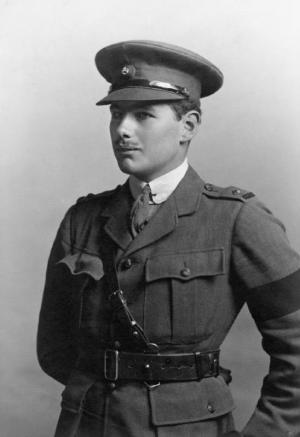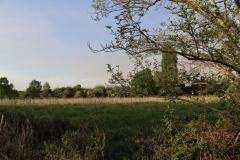
The above remark is attributed to Haig's Chief of Staff, Lieutenant Sir Lancelot Kiggell. He apparently uttered it when he looked down over the battlefield of Passchendale in November shortly after the 26th City of Winnipeg regiment had finally taken the pitiful ruins of the village. Third Ypres remains perhaps one of the most harrowing battles in British military history, cutting short the lives of 70,000+ men on each side.
The first attacks were launched on a broad front on 31st July (the 1,113th day of the war for us). There were 3 separate assaults on the surrounding ridges in the month of August - Pilkem Ridge (31st July - 4 August), Ghelvult Plateau and Westhoek (10th August) and Langemark (16th - 18th August).
Each attack followed a familiar pattern - a successful, co-ordinated move forward by troops and tanks often in dry weather; a partial retreat as the enemy artillery and crack Eingreif divisions launched an immediate counterattack; terrible days of rain and mist that reduced the broken terrain into cloying mud. (There many wounded were condemned to die in terrible agony slowly drowning in the shell holes that pockmarked No Man's Land.) Then there would be a temporary calling off of the battle as weather deteriorated, planes could not fly and tanks and artillery were unable to move forward quickly to support the infantry. Five inches of rain fell in August alone (double the average).
On the 25th of the month the Commander in Chief took, for him, the unusual step of changing his mind and replaced the over-optimistic Gough with the "Daddy" Plumer, who having a more orderly, cautious, tactical mind, preferred carefully planned assaults with specific objectives.
Our community lost five young men in these first 3 attacks. Captain William Oscar Wilkinson of the 7th Cheshires was killed in action on the 5th, aged 23. He lived with his parents and 2 brothers at Oak Lea, Hill Top. Apprenticed as a chemist to Charles Charnley's of Grove Street he became, given his knowledge, an "anti-gas officer". He is remembered in St Bart's, on the town memorial and at the Menin Gate along with 54,000+ others.
Sergeant Harry Rigg died aged 28 on the same day. A member of the 102nd Brigade Royal Field Artillery, his grave can be found in Sanctuary Wood Cemetery, Hill 62, 5 Kilometres east of Ypres. He was born in Wilmslow in 1894 and before the war was living at 3 Hospital Street, Northwich, apprenticed to his father, a gentleman's outfitter. St Bart's and the town memorial remember his passing.
Fighting with the 16th Manchesters, Private John Rushton (250746) died of his wounds on the 9th. He had been moved some distance to a hospital on the French coast but sadly died there and is buried in St Sever Cemetery Extension, Rouen. He is remembered as well on the town memorial. He lived at Dean Row with 3 brothers, mother and his father, who was a chief warehouseman for a cotton manufacturer. John had been a clerk in the same firm.
Bailleur Communal Cemetery Extension just over the French border contains the grave of Private Charles Rigby (50185) of the 9th Cheshires and formerly of the 7th (1936). He volunteered in 1914 and had survived Suvla Bay at Gallipoli. He took part in the first Ypres attack on 31st July, but he had always been poorly and succumbed to diptheria and heart failure 15 days later, aged 22. Formerly a gardener to Mrs Emily Greg of Styal, he was living at 30 Parke Road and working as a farm labourer before he enlisted. St Bart's and the town memorial remember him.
Our last casualty was on the 24th - Captain Noel Esmond Lee aged 20, killed in action fighting with the 8th Kings Own Rifle Corps. Noel was born in Chelford, son of Brigadier General Noel Lee of Nether Alderley, who had led the Manchester Regiment at Gallipoli and died in a Malta hospital in June 1915. Noel Esmond Lee attended Eton College and RMC Sandhurst and is remembered there, at Styal, St Bart's, Nether Alderley and at Tyne Cot Cemetery Memorial along with 30,000+ others with no known grave.
Jon Armstrong and Alan Cooper with a contribution from Michael Scaife Wilmslow Historical Society.
Photo: Captain Noel Esmond Lee.









